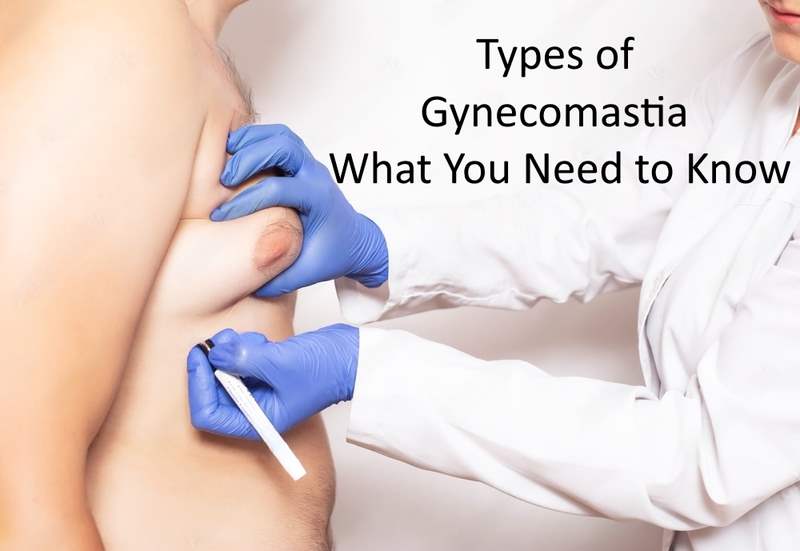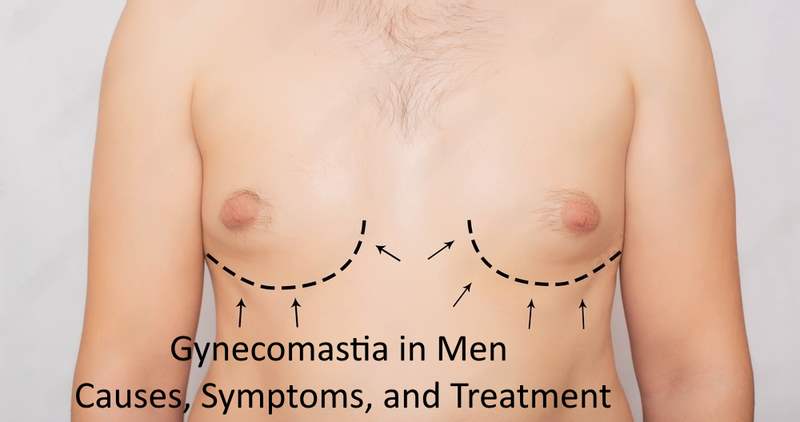
Gynecomastia, commonly known as the enlargement of breast tissue in men, is a condition that can cause significant emotional and physical discomfort. This article explores the various aspects of gynecomastia, including its causes, symptoms, diagnostic procedures, and treatment options, providing a comprehensive overview for those affected by or interested in understanding this condition.
Key Takeaways
- Gynecomastia is a benign proliferation of glandular breast tissue in men, often linked to hormonal imbalances, medication use, or underlying health conditions.
- It can manifest at different life stages, including in newborns, adolescents, and older men, with varying degrees of severity and duration.
- Diagnosis typically involves physical examinations, hormonal screenings, and imaging tests like mammograms or ultrasounds to rule out other conditions.
- Treatment options range from watchful waiting and medical therapies to surgical interventions such as liposuction or mastectomy depending on the severity and persistence of symptoms.
- Lifestyle modifications, including diet and exercise, avoiding certain medications and substances, and psychological support, can also play crucial roles in managing and alleviating symptoms.
Understanding Gynecomastia

Definition and Overview
Gynecomastia is defined as the benign proliferation of glandular breast tissue in men. This condition can manifest in various demographics, including newborns, adolescents, and older men. While often self-limited, it can cause significant emotional distress and physical discomfort.
Physiological vs. Nonphysiological Types
Physiological gynecomastia occurs due to natural hormone level changes during certain life stages such as infancy, puberty, or older age. Nonphysiological gynecomastia, however, may arise from chronic conditions like cirrhosis or hypogonadism, or the use of certain medications and illicit drugs.
Prevalence and Demographics
Gynecomastia can affect individuals at any age but is most commonly seen in three main age groups: newborns, adolescents undergoing puberty, and older men. The condition is not usually a serious problem, but it can be challenging to cope with due to the potential for pain and embarrassment.
Causes of Gynecomastia

Hormonal Imbalances
Hormonal imbalances are a primary factor in the development of gynecomastia. This condition often arises when there is an increased level of estrogen or a decrease in testosterone. Such imbalances can occur naturally during different life stages such as puberty, middle age, and in elderly men.
Medication and Drug Influence
A variety of medications and illicit drugs can lead to gynecomastia. Common culprits include antipsychotics, antiretrovirals, and treatments for prostate cancer. Recreational drugs like anabolic steroids and marijuana also play a significant role. Discontinuing the use of these substances may alleviate symptoms.
Underlying Health Conditions
Several health conditions can induce gynecomastia, including:
- Liver diseases
- Kidney disease
- Lung cancer
- Testicular cancer
These conditions disrupt the normal balance of hormones, thereby fostering the development of gynecomastia. Addressing these underlying issues is crucial for effective management of the condition.
Symptoms and Diagnosis
Common Symptoms
The primary symptom of gynecomastia is overdeveloped or disproportionate male breasts. This condition can also manifest with tenderness in the breast area. It’s important to differentiate these symptoms from other conditions, such as asthma symptoms, which are unrelated.
Physical Examination
During a physical examination, a healthcare provider will assess the breast tissue’s size, consistency, and symmetry. They may also check for any signs of underlying conditions that could contribute to the symptoms.
Diagnostic Imaging and Tests
Various diagnostic tools are employed to confirm gynecomastia:
- Blood tests to check hormone levels.
- Mammograms — an X-ray of the breast.
- Computerized tomography (CT) scans — a series of X-rays taken from different angles.
- Magnetic resonance imaging (MRI) scans — uses a magnetic field and radio waves.
- Testicular ultrasounds — use sound waves to create images of the testicles.
- Tissue biopsies — a tiny piece of tissue is removed and examined in a lab.
Early diagnosis and appropriate testing are crucial for effective management and treatment of gynecomastia.
Gynecomastia Explained: Medical Treatments

Medication Options
Various medications are implicated in the treatment of gynecomastia, particularly those that address hormonal imbalances. Tamoxifen, a drug that blocks estrogen, is often used not only for breast cancer but also to alleviate symptoms in men. Aromatase inhibitors, another class of drugs, are also employed to prevent or treat gynecomastia by reducing estrogen levels.
Hormonal Therapy
Hormonal therapy plays a crucial role in managing gynecomastia, especially when caused by an imbalance of hormones. Treatments may include medications that either reduce estrogen levels or increase testosterone levels, depending on the individual’s specific hormonal profile.
Discontinuing Contributory Medications
It is essential to review and possibly discontinue medications that contribute to gynecomastia. Common culprits include certain types of heart medicines, anti-anxiety medications, and substances such as amphetamines found in ADHD medications. Adjusting these medications can significantly alleviate symptoms.
Gynecomastia Explained: Surgical and Non-Surgical Interventions

Liposuction
Liposuction is a minimally invasive procedure often used to remove excess fat from the male breast area. It is typically recommended for patients with predominantly fatty tissue and minimal glandular tissue. Surgery can be performed at any time to reduce breast tissue, and various techniques have been developed to ensure minimal scarring and quick recovery.
Gynecomastia Explained: Mastectomy
Mastectomy involves the removal of the glandular tissue of the breasts. It is often considered when liposuction is not sufficient or when there is significant glandular enlargement. This surgical option provides a more definitive treatment for gynecomastia, offering a permanent solution. The choice of surgical approach may vary based on the severity and duration of symptoms.
Alternative Therapies
Alternative therapies include hormonal therapy, diet adjustments, and exercise. These non-surgical options are more effective if used early after symptoms are first noted. They can serve as adjuncts to surgical treatments or as initial management steps for milder cases of gynecomastia.
Lifestyle Adjustments and Home Remedies

Gynecomastia Explained: Diet and Exercise
Balancing your diet and engaging in regular exercise are crucial for managing gynecomastia. Incorporating healthy foods, reducing calorie intake, and ensuring a balance of macronutrients can significantly impact the condition. Regular physical activity, especially strength training and aerobic exercises, helps in reducing fat and building muscle, which can improve the appearance of the chest area.
Avoiding Alcohol and Drugs
To mitigate symptoms, it is essential to avoid substances that can exacerbate the condition. This includes limiting the intake of alcohol and refraining from using recreational drugs or non-prescribed medications that might lead to hormonal imbalances.
Emotional and Psychological Support
It can often lead to emotional and psychological distress. It is important to seek support from friends, family, or professional counselors. Engaging in support groups where individuals share similar experiences can also be beneficial. Managing stress through techniques like mindfulness or yoga can further aid in coping with the condition.
Gynecomastia Explained: Prognosis and Management

Long-term Outlook
The long-term outlook for individuals is generally positive, especially when the condition is addressed early and appropriately. Early treatment will maximize benefit, particularly in cases where gynecomastia is caused by reversible factors such as medication use or minor hormonal imbalances.
Monitoring and Follow-up
Regular follow-up appointments are crucial to effectively manage gynecomastia. These should ideally be scheduled bi-annually to monitor any changes or improvements and adjust treatment plans as necessary. This proactive approach helps in mitigating any potential complications or the progression of the condition.
When to Seek Further Medical Attention
Patients should seek immediate medical attention if they experience any new or worsening symptoms. It is also important to consult healthcare providers if gynecomastia persists despite initial treatment efforts or if there are concerns about underlying diseases or malignancies.
Conclusion
In conclusion, gynecomastia, characterized by the benign proliferation of glandular breast tissue in men, can arise from various physiological and non-physiological factors. While often self-limiting, the condition can cause significant emotional and physical discomfort, necessitating a range of treatment options. From lifestyle adjustments and medication cessation to pharmacological interventions and surgical procedures, the approach to managing gynecomastia should be tailored to the individual’s specific circumstances and underlying causes. It is essential for those affected to consult healthcare professionals to determine the most appropriate strategy for their particular situation.
Frequently Asked Questions
What is gynecomastia?
Gynecomastia is the benign proliferation of glandular breast tissue in men, which can appear in newborns, adolescents, and older men due to various causes including hormonal changes, medications, or chronic conditions.
How common is gynecomastia?
Gynecomastia is quite common and can occur at different life stages. It is seen in newborns, adolescents undergoing puberty, and older men due to natural hormonal changes.
What are the main causes of gynecomastia?
The main causes include hormonal imbalances, the use of certain medications or drugs, and underlying health conditions such as liver cirrhosis or kidney failure.
What are the treatment options for gynecomastia?
Treatment options vary based on the underlying cause but can include medication, hormonal therapy, discontinuation of causative medications, or surgical interventions like liposuction or mastectomy.
Is surgery always necessary to treat gynecomastia?
Surgery is not always necessary, especially if gynecomastia is mild or likely to resolve on its own. Non-surgical treatments and lifestyle adjustments can also be effective.
Can gynecomastia resolve on its own?
Yes, especially in cases related to puberty or minor hormonal fluctuations, gynecomastia can resolve on its own without the need for treatment.





